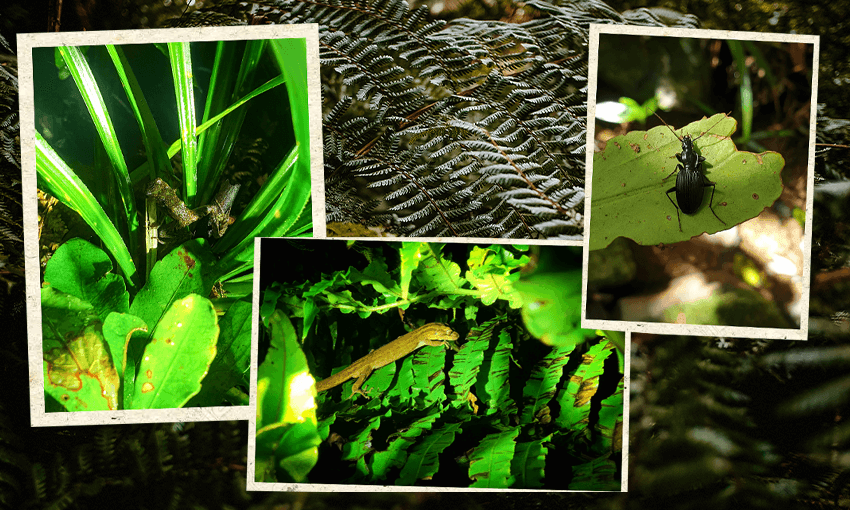Ellen Rykers visits Mahakirau Forest Estate, ‘a crown jewel in the Coromandel Range’, where pest control is serious business.
This is an excerpt from our weekly environment newsletter Future Proof – sign up here.
The Mahakirau Forest Estate is not your average subdivision. Enter through its tall gates and you’ll be greeted by lush forest and predator traps. Lots and lots of predator traps – one every few metres along the roadside. These 600 hectares of Coromandel bush are home to rare and endangered native wildlife, as well as a community of people dedicated to protecting the ecosystem from the ravages of introduced predators.
Jude and Tim Hooson didn’t know anything about predator control before moving here 20 years ago, but the duo have become experts. They’re part of the Mahakirau Forest Estate Society, which started with a programme to target stoats and possums. Then they moved onto rats. “This transformed things. Now we see all the seed on the ground and a lot more insect life,” Tim and Jude say. But it’s an ongoing battle – there’s constant reinvasion – and the estate now runs a programme targeting 12 pest species.
On a day walk, Tim and Jude traipse through the bush with bait bucket in hand, refreshing bait stations and checking traps. They still catch lots of stoats and ferrets. “We don’t have a bigger problem than anyone else, we’ve just got really good at catching them,” Jude explains.
Because there’s a lot to protect here. Mahakirau used to be a farm, and the Hoosons say it’s been “seriously cool” to see the bush regenerate. Resident wildlife includes three “icon” species: the Coromandel northern striped gecko, Archey’s frog and forest ringlet butterfly.
On a night walk through the bush, we spot an array of critters including the three icons. A couple of years ago, a butterfly expert visited the estate in search of the forest ringlet. He’d spent three months searching elsewhere and had yet to see a single butterfly, but at Mahakirau he saw five. “We thought, ‘wow, we could be the last stronghold’. There was a real sense of excitement but also trepidation and responsibility,” says Tim.
“When you see the effects of conservation, it just hooks you,” says Jude. She’s now the chief executive of the Predator Free Hauraki Coromandel Community Trust, a collective of around 60 community groups working to make their patch predator free. The Trust is linking up all this effort into one big landscape-scale project.
So could we one day see the Coromandel Peninsula predator free? With people like Jude and Tim on the frontline, I’m hopeful.
